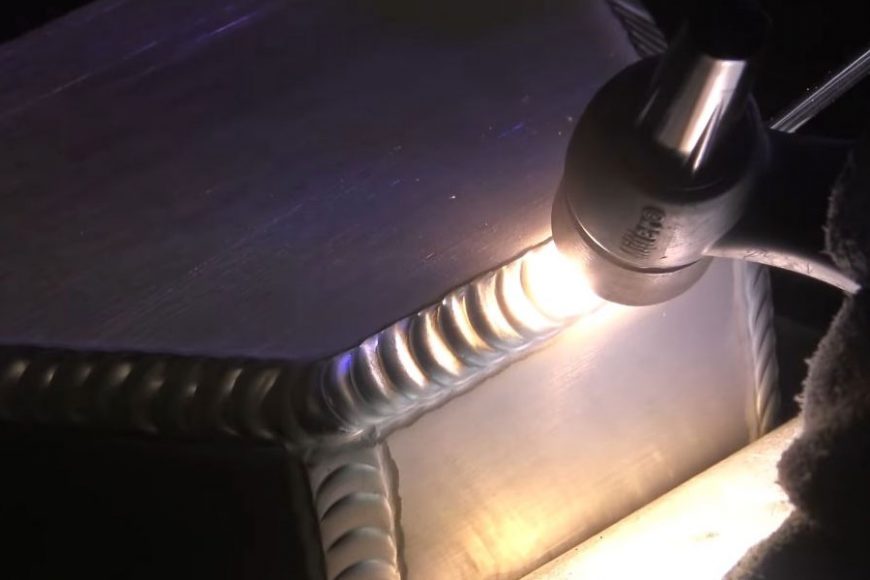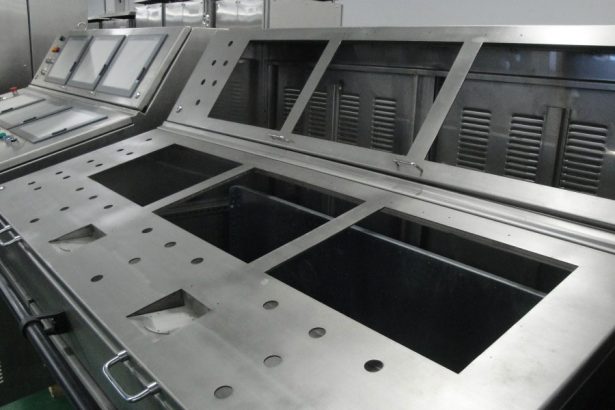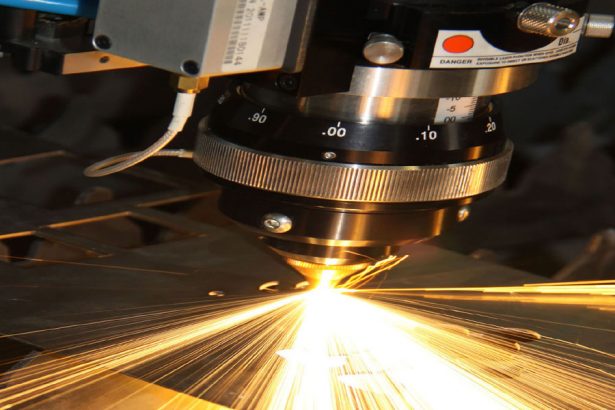Welding is an essential process in manufacturing, construction, and various industrial applications, where materials are joined through the application of heat, pressure, or both. Among the many types of welding techniques, Metal Inert Gas (MIG) welding and Tungsten Inert Gas (TIG) welding are two of the most widely used methods. Both have distinct characteristics, applications, and advantages, and understanding these differences is crucial for selecting the appropriate welding technique for a specific task. This comprehensive guide delves into the key differences between MIG and TIG welding, comparing their processes, equipment, applications, and more.
MIG Welding Overview
MIG welding, also known as Gas Metal Arc Welding (GMAW), is a type of arc welding that utilizes a continuously fed wire electrode and an inert gas shield to protect the weld pool from contaminants. MIG welding is considered a semi-automatic or automatic process, where the welder controls the movement of the welding gun and the speed of the wire feed, while the machine takes care of the arc and heat control.
Process and Equipment
In MIG welding, an electric arc is formed between a consumable wire electrode and the workpiece, generating the necessary heat to melt the material and create a weld pool. The wire is continuously fed through the welding gun, and the welder adjusts the gun’s position and angle to ensure the quality of the weld. The electrode serves as both the heat source and the filler material for the weld.
The inert gas, typically a mixture of argon, carbon dioxide, or helium, is fed through the welding gun to shield the molten weld pool from atmospheric contamination, such as oxygen and nitrogen. This protective gas helps prevent oxidation and ensures a clean, strong weld. The choice of gas mixture depends on the materials being welded and the specific requirements of the weld.
MIG welding is typically done using a power supply, a welding gun, a wire feeder, and a gas cylinder. The welder needs to adjust the voltage, wire feed speed, and gas flow rate to optimize the process for different materials and thicknesses. While MIG welding is relatively easy to learn, it requires precise control of the welding parameters to achieve high-quality results.
Applications
MIG welding is versatile and can be used to weld a wide range of materials, including mild steel, stainless steel, aluminum, and other non-ferrous metals. It is particularly effective for thicker materials, as the continuous wire feed allows for faster welding speeds. MIG welding is commonly used in industries such as automotive manufacturing, construction, shipbuilding, and general fabrication.
Due to its high deposition rate and ease of use, MIG welding is often employed in production environments that require speed and efficiency. It is especially popular for tasks like welding structural components, piping, and sheet metal.
Advantages of MIG Welding
- Speed: MIG welding has a higher deposition rate than other welding methods, making it faster for many applications.
- Ease of Use: MIG welding is relatively easy to learn, making it accessible to beginners and suitable for high-volume production environments.
- Versatility: MIG welding can be used on a wide variety of materials and thicknesses, making it highly adaptable to different tasks.
- Minimal Post-Weld Cleanup: The shielding gas minimizes spatter and oxidation, reducing the need for extensive cleanup after welding.
- Continuous Feed: The automatic wire feed allows for continuous welding without stopping to replace electrodes, making it more efficient in long welds.
Disadvantages of MIG Welding
- Less Precision: Compared to TIG welding, MIG welding offers less control over the weld pool, which can be a disadvantage for delicate or intricate projects.
- Limited in Outdoor Conditions: MIG welding is more sensitive to wind and drafts, which can disrupt the protective gas shield. This makes MIG welding less effective for outdoor use without special equipment.
- Quality Control: While MIG welding is fast and efficient, it may produce less aesthetically pleasing results compared to TIG welding, especially for critical applications requiring high cosmetic standards.
TIG Welding Overview
TIG welding, or Gas Tungsten Arc Welding (GTAW), is a precise welding process that uses a non-consumable tungsten electrode to generate the arc, while a separate filler material is added manually by the welder. The entire process is shielded by an inert gas, typically argon or helium, to protect the molten weld pool from contamination. TIG welding is known for producing high-quality, clean welds, and it is commonly used in applications that require precision and a high level of skill.
Process and Equipment
In TIG welding, an electric arc is struck between a tungsten electrode and the workpiece, creating heat that melts the material and allows the creation of a weld pool. Unlike MIG welding, the tungsten electrode does not melt and become part of the weld, hence the name “non-consumable” electrode. The welder must feed filler metal into the weld pool manually, which allows for precise control over the amount of material added to the joint.
The shielding gas, typically pure argon, is fed around the weld area to prevent oxidation and contamination of the weld pool. The welder controls the heat input and filler material, allowing for fine adjustments to achieve a clean, aesthetically pleasing weld. The process is typically slower than MIG welding but offers greater control over the weld quality.
TIG welding is often done using a power supply, a TIG torch with a tungsten electrode, a foot pedal or hand control to adjust the heat, and a filler rod that is added as needed. The welder must manage the balance between the arc, the heat, and the filler rod to produce a high-quality weld. Unlike MIG welding, TIG welding requires a high level of skill and coordination, as the welder must simultaneously control the torch and the filler rod while maintaining a steady hand.
Applications
TIG welding is often used in applications where precision and aesthetic quality are paramount. It is particularly effective for welding thin materials and is commonly used in industries such as aerospace, automotive, electronics, and medical device manufacturing. TIG welding is also the preferred method for welding high-alloy materials like titanium, stainless steel, and aluminum.
Due to the high level of control it offers, TIG welding is often used for intricate welds, such as those found in critical components, thin-walled tubing, or ornamental metalwork. The method is ideal for situations where the quality of the weld surface and the strength of the joint are crucial.
Advantages of TIG Welding
- Precision: TIG welding offers superior control over the weld pool, resulting in clean, precise welds with minimal spatter.
- High-Quality Welds: The process produces aesthetically pleasing welds with smooth, uniform beads, making it ideal for visible or decorative joints.
- Versatility: TIG welding is highly versatile and can be used for welding a wide range of metals, including exotic alloys and materials that are difficult to weld with other processes.
- No Spatter: Since the electrode is non-consumable, there is minimal spatter, reducing the need for post-weld cleanup.
- Ability to Weld Thin Materials: TIG welding is well-suited for welding thin sections of material with high precision.
Disadvantages of TIG Welding
- Slower Process: TIG welding is a slower process compared to MIG welding, as it requires the welder to manually feed the filler material and make fine adjustments to the weld pool.
- Complexity: TIG welding requires a high level of skill and experience, making it more difficult to learn than MIG welding.
- Cost: TIG welding equipment and consumables are often more expensive than MIG welding, which can increase overall costs.
- Less Suitable for Thick Materials: While TIG welding can handle thicker materials, it is typically slower and less efficient than MIG welding for large-scale projects or thick joints.
Key Differences Between MIG and TIG Welding
1. Electrode Type
The most fundamental difference between MIG and TIG welding lies in the type of electrode used. MIG welding uses a consumable wire electrode that is continuously fed into the weld pool, while TIG welding uses a non-consumable tungsten electrode, with the welder manually feeding filler material as needed. This distinction impacts the welding process and the quality of the finished weld.
2. Filler Material
In MIG welding, the wire electrode itself serves as both the filler material and the electrode, while in TIG welding, the welder manually feeds a separate filler rod into the weld pool. This difference allows TIG welds to be more precise and customized, as the welder has complete control over the amount of filler material added.
3. Speed
MIG welding is generally faster than TIG welding due to the continuous wire feed and the ability to weld larger sections of material more quickly. TIG welding is a slower process, as it requires more manual intervention and precision.
4. Skill Level
TIG welding requires a higher skill level than MIG welding. The welder must be able to coordinate the torch, filler rod, and foot or hand controls simultaneously. MIG welding, on the other hand, is easier to learn and requires less coordination, making it more suitable for beginners and high-production environments.
5. Quality and Precision
TIG welding is preferred for applications that require high precision and aesthetically perfect welds, as it allows for more control over the weld pool and the amount of filler material added. MIG welding, while capable of producing strong welds, may not achieve the same level of finish and cleanliness as TIG welding, especially in delicate or visible welds.
6. Material Suitability
MIG welding is generally more versatile and can be used on a broader range of materials and thicknesses, including aluminum, stainless steel, and mild steel. It is especially effective for welding thicker materials quickly. TIG welding is often used for thinner materials and more exotic alloys, such as titanium and magnesium, where precision is paramount.
7. Applications
MIG welding is ideal for high-production and heavy-duty applications where speed and efficiency are the primary concerns. It is commonly used in construction, automotive manufacturing, and other industries requiring high throughput. TIG welding, with its superior control, is better suited for applications that require high-quality, precision welds, such as aerospace, medical device manufacturing, and high-end automotive work.
Conclusion
Both MIG and TIG welding offer unique advantages and are suited to different applications based on the material, weld quality, and speed requirements. MIG welding is fast, easy to learn, and suitable for a wide range of materials, making it ideal for high-production environments. TIG welding, on the other hand, offers superior control and precision, making it the preferred choice for delicate, high-quality welds on thin materials and exotic alloys.
Understanding the differences between MIG and TIG welding is essential for selecting the right process for a given task. Whether you are working on automotive manufacturing, artistic metalwork, or critical aerospace components, both methods have their place in modern welding applications, and knowing when to use each one can significantly improve both efficiency and weld quality.




